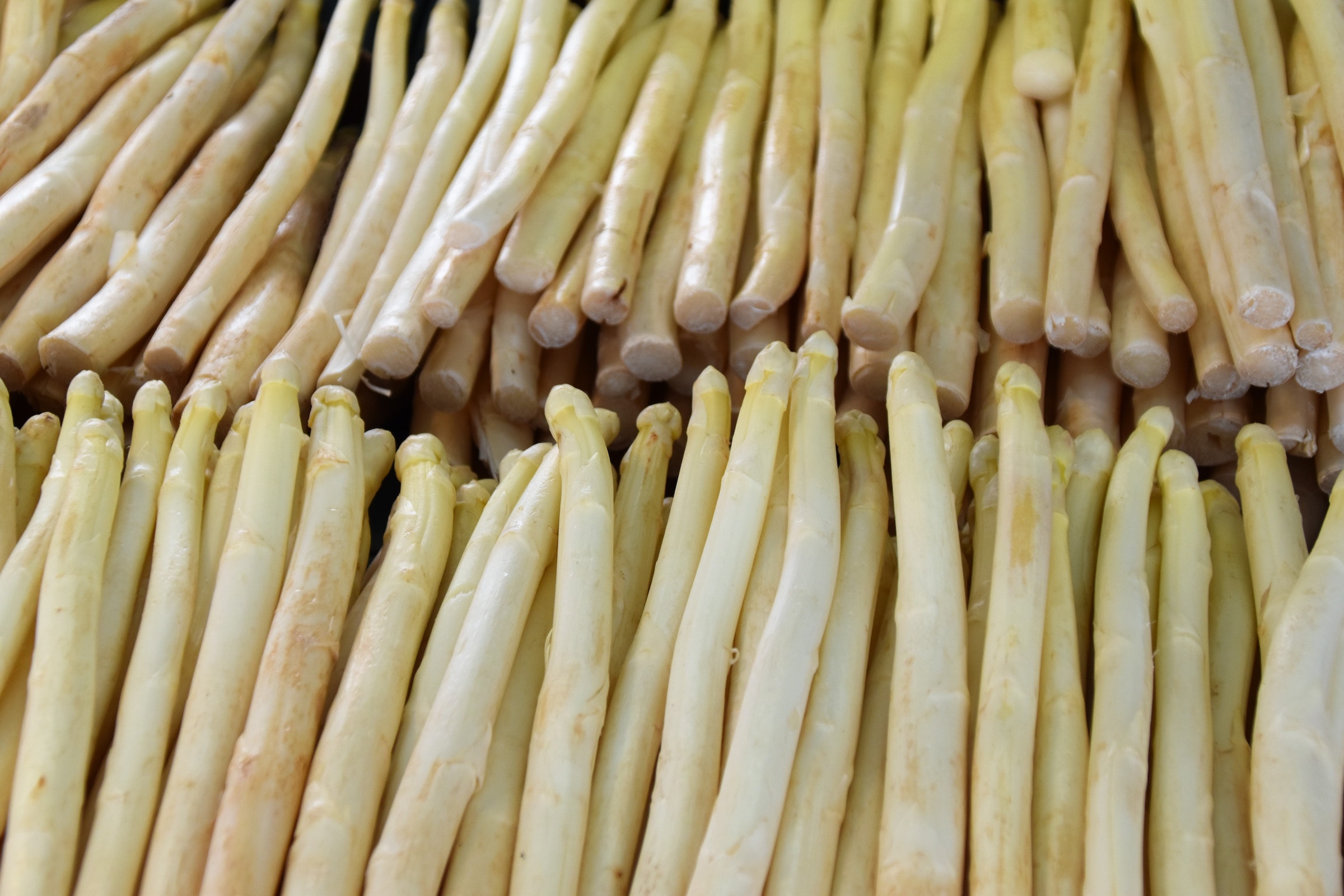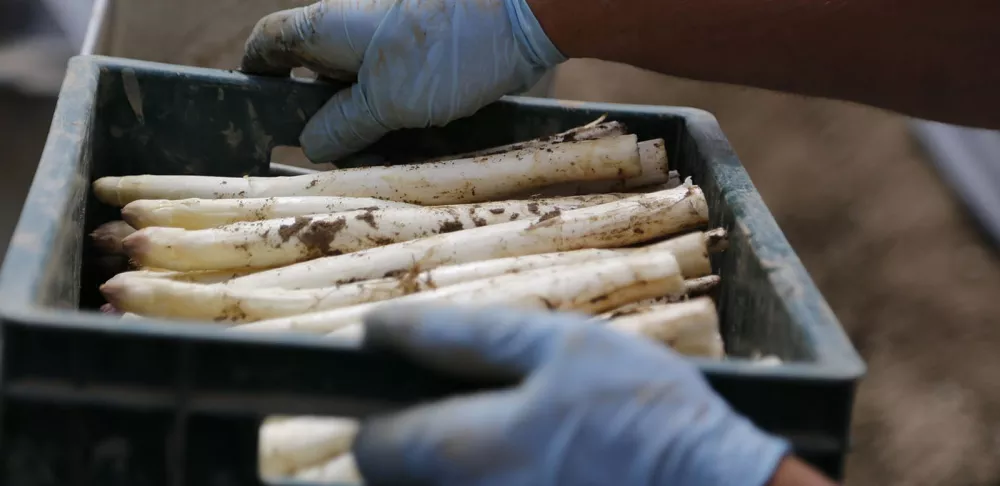Delicate stalks of asparagus start to peek above the ground this time of year, heralding spring and the abundance of produce to follow in the summer months.
After a long winter where root vegetables tend to be the only “seasonal” produce available (at least in northern climates), asparagus is one of the first green vegetables to grace our plates as the weather gets warmer, commanding almost as much fanfare as other early risers like ramps. Along with traditionally green asparagus, however, you might also notice its ghostly twin, white asparagus, making an appearance alongside it in grocery stores and farmers markets.
My youth was haunted by a literary character in the form of a vampire rabbit, aptly named “Bunnicula,” who was believed to suck the juice out of vegetables, stripping them of their vigor and leaving them pale. I was much older than I’d care to admit before I accepted that this was not the probable cause for white produce such as cauliflower, radishes, parsnips and especially white asparagus.
How could evolutionary science possibly continue to produce white vegetables in a world where health messages are all about “eating the rainbow,” with a special emphasis on greens? Where green asparagus already exists, what’s the deal with white asparagus?
Here we explore the ins and outs of white asparagus, beginning with a simple explanation for its existence.
What is White Asparagus?
In short, white asparagus is simply green asparagus that hasn’t seen the sun. It hasn’t been stripped of its color so much as the color development was never activated during its growth. White asparagus spears have either remained underground, often cultivated in mounds of dirt to promote their production, or have grown in complete shade, whether natural or man-made, that prevents photosynthesis from taking place.
Where some vegetables need the sun in order to grow at all, asparagus is actually shade-tolerant, but a lack of sun prevents the development of chlorophyll, the compound which makes things green. Biologically speaking, white and green asparagus are basically identical, and share the same seasonal produce timeline. The primary difference between them is simply evidence of nature (green) versus nurture (white).
Where Does White Asparagus Grow?
Asparagus stalks are perennial plants that will start to peek up through the ground once the temperature reaches about 50 degrees Fahrenheit. Growing white asparagus is the same as growing green asparagus, which has a very wide climatic range of possibility and grows all over the world, so long as the possibility of either natural or fabricated shade exists.
White asparagus production isn’t as commonly nor intentionally done in the United States as it is in certain other countries, though you may catch it at a farmers’ market or two. (If you do, snap it up!) It is a prized crop, however, in both Peru and especially Germany, where it is known as spargel — which simply means “asparagus” — and is the cause of much fanfare in the spring during white asparagus season, with every kind of restaurant from pubs to find dining establishments offering specialty seasonal plates to highlight it.

Is White Asparagus Good for You?
Despite its lack of color, which usually broadcasts vitamin content, white asparagus has nearly the same nutritional impact of green asparagus, with fiber and antioxidants being chief among its benefits. Green asparagus has more of both of these, to be fair, but so long as you’re consuming vegetables no need to split hairs over micro doses of the good stuff.
Eat the rainbow, of course, and some white veggies too while you’re at it. (Cauliflower continues to be a dietary superstar, despite its colorless nature.)
How to Cook White Asparagus
White white asparagus has a very similar flavor to green asparagus, its intensity is milder, and its texture slightly more tender. Dishes highlighting white asparagus generally keep it pretty simple to let this natural tenderness and subtlety of flavor shine. During Germany’s Spargelzeit — asparagus season — the most common preparation for white asparagus is topped with hollandaise and chives and maybe served alongside boiled potatoes and ham.
Try the most delicate white asparagus spears raw, or else a simple blanching in boiling water followed by shocking in an ice water bath to preserve its character and texture. No need to bury it under complicated layers: butter, lemon, herbs, eggs and hollandaise tend to be white asparagus’ favorite dance partners, but you can also use white asparagus in any preparation that calls for its green twin.
If you get your hands on white asparagus this season, try it in some of our favorite recipes from Chef-Instructors and alumni:
- Chilled Asparagus and Fresh Herb Soup
- Simone Tong’s Grilled Asparagus with Pidan Sauce
- Fish en Papillote with Farro and Asparagus
- Meyer Lemon, Celery and Asparagus Salad
- Butter Poached Lobster with Poached Eggs, Sautéed Asparagus, Hollandaise Sauce and Puff Pastry Vol au Vents
P.S. from a sommelier: try asparagus of any color paired with Austria’s Grüner Veltliner to echo its unique vegetal taste.






